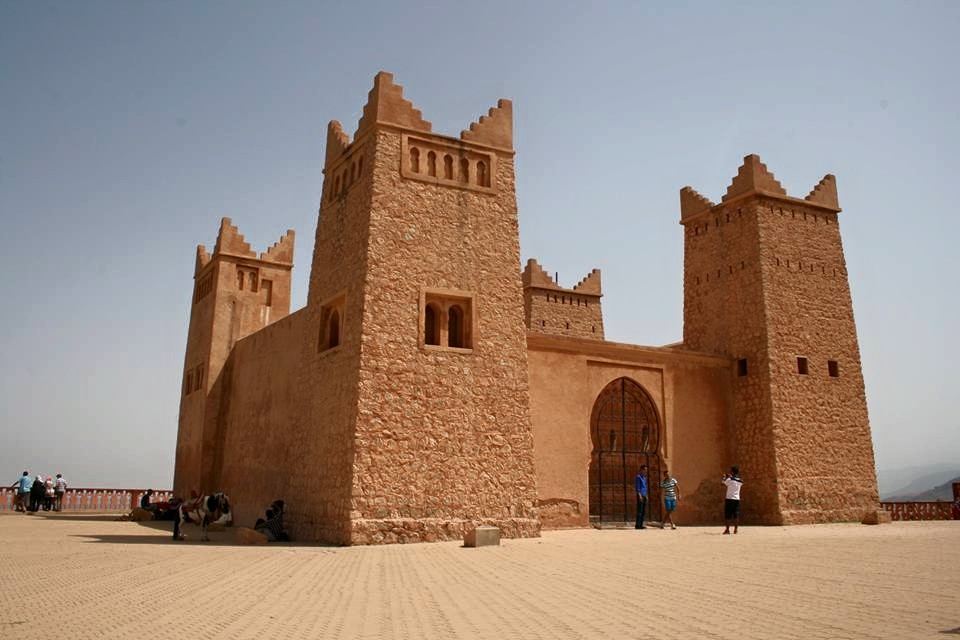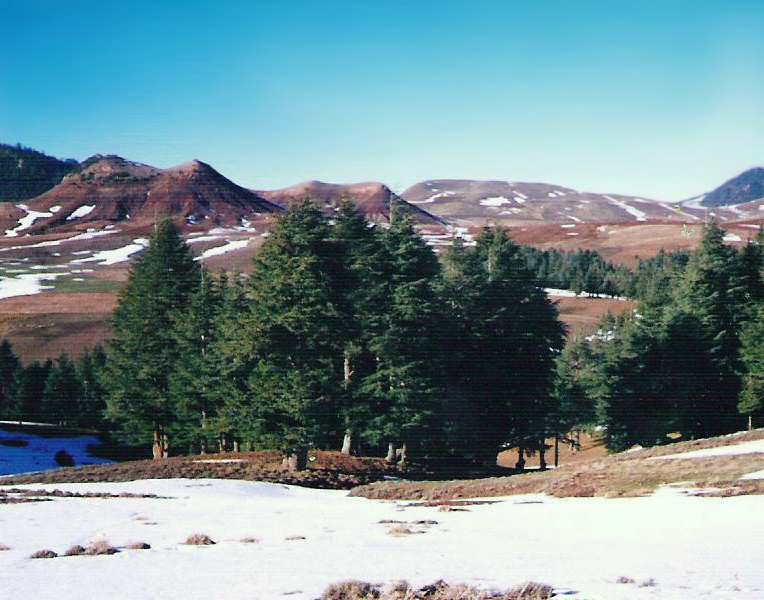|
Khénifra
Khenifra ( Berber: ''Xnifṛa'', ⵅⵏⵉⴼⵕⴰ, ar, خنيفرة) is a city in northern central Morocco, surrounded by the Atlas Mountains and located on the Oum Er-Rbia River. National Highway 8 also goes through the town. The population, as of a 2019 census, was 228,567 History Khenifra has been the Zayanes' central town for centuries. As such, it was an important military holding in the Zaian War. French General Paul Prosper Henrys had planned to lead the first attack on Khenifra on 10 June 1914. There would be three columns of troops, totaling up to 14,000 officers, to take Khenifra from the Zayanes control.. One column was under Lieutenant-Colonel Henri Claudel, one under Colonel Gaston Cros, and one under Colonel Noël Garnier-Duplessix.. Mouha ou Hammou Zayani led troops to attempt to stop the Khenifra campaign, but was eventually unsuccessful.. The French took control of the town, but with losing around 600 men. In addition to leading the Zayanes, Hammou was responsib ... [...More Info...] [...Related Items...] OR: [Wikipedia] [Google] [Baidu] |
Béni Mellal-Khénifra
Béni Mellal-Khénifra ( ar, بني ملال - خنيفرة, banī mallāl - ḵunayfira; ber, ⴰⵢⵜ ⵎⵍⵍⴰⵍ - ⵅⵏⵉⴼⵕⴰ, ayt mllal - xnifṛa) is one of the twelve regions of Morocco. It covers an area of 28,374 km2 and recorded a population of 2,520,776 in the 2014 Moroccan census. The capital of the region is Beni Mellal. Geography Béni Mellal-Khénifra is located in the interior of the country. It borders Rabat-Salé-Kénitra to the north, Fès-Meknès to the northeast, Drâa-Tafilalet to the southeast, Marrakesh-Safi to the southwest and Casablanca-Settat to the northwest. In the western and central part of the region is the productive Tadla plain irrigated by the Oum Er-Rbia River. This plain is bracketed by the High Atlas mountains which run through the southern and eastern parts of the region, and the foothills of the Middle Atlas to the north. History Béni Mellal-Khénifra was formed in September 2015 by adding Khouribga Province of Chaoui ... [...More Info...] [...Related Items...] OR: [Wikipedia] [Google] [Baidu] |
Khénifra Province
{{BéniMellalKhénifra-geo-stub ...
Khénifra is a province in the Moroccan region of Béni Mellal-Khénifra. was 511,53 The major cities and towns are* Aguelmous * Aït Ishaq * Amalou Ighriben * El Kbab * Had Bouhssoussen * Kehf Nsour * Kerrouchen * Khenifra * Moulay Bouazza * M'Rirt * Tighassaline * Tighza Subdivisions The province is divided administratively into the following: References Khénifra Province Khénifra is a province in the Moroccan region of Béni Mellal-Khénifra. was 511,53 The major cities and towns are* Aguelmous * Aït Ishaq * Amalou Ighriben * El Kbab * Had Bouhssoussen * Kehf Nsour * Kerrouchen * Khenifra * Moulay Bou ... [...More Info...] [...Related Items...] OR: [Wikipedia] [Google] [Baidu] |
Chabab Atlas Khénifra
Chabab Atlas Khénifra is a Morocco, Moroccan football (soccer), football club currently playing in the Botola. The club is located in the town of Khénifra. The club finished in the 2nd place in the Botola 2 in the 2013–14 season, which led to the promotion to the first division. Football clubs in Morocco 1943 establishments in Morocco Sports clubs in Morocco Association football clubs established in 1943 Béni Mellal-Khénifra {{Morocco-footyclub-stub ... [...More Info...] [...Related Items...] OR: [Wikipedia] [Google] [Baidu] |
Provinces Of Morocco
In Morocco, the 75 second-level administrative subdivisions are 13 prefectures and 62 provinces. They are subdivisions of the 12 regions of Morocco. Each prefecture or province is subdivided into arrondissements (only in prefectures of some metropolitan areas), municipalities (''communes'', sing. ''commune'') or urban municipalities (''communes urbaines'', sing. ''commune urbaine'') in other urban areas, and districts (''cercles'', sing. ''cercle'') in rural areas. The districts are subdivided into rural municipalities (''communes rurales'', sing. ''commune rural''). One prefecture (Casablanca) is also subdivided into ''préfectures d'arrondissements'' (sing. ''préfecture d'arrondissements''), similar to districts (''cercles'') except they are grouping a few arrondissements instead of rural municipalities. Note: The arrondissements and (urban) municipalities should probably be thought of as fourth-level subdivisions, on the same level as the rural municipalities, but they are no ... [...More Info...] [...Related Items...] OR: [Wikipedia] [Google] [Baidu] |
Regions Of Morocco
Regions are currently the highest administrative divisions in Morocco. Since 2015, Morocco officially administers 12 regions, including one (Dakhla-Oued Ed-Dahab) that lies completely within the disputed territory of Western Sahara and two (Laâyoune-Sakia El Hamra and Guelmim-Oued Noun) that lie partially within it. The regions are subdivided into a total of 75 second-level administrative divisions, which are Prefectures and provinces of Morocco, prefectures and provinces. A region is governed by a directly elections in Morocco, elected regional council. The president of the council is responsible for carrying out the council's decisions. Prior to the 2011 Moroccan constitutional referendum, 2011 constitutional reforms, this was the responsibility of the Wali, the representative of the central government appointed by the King, who now plays a supporting role in the administration of the region. Regions since 2015 On 3 January 2010, the Moroccan government established the Con ... [...More Info...] [...Related Items...] OR: [Wikipedia] [Google] [Baidu] |
Mouha Ou Hammou Zayani
Mouha Ou Hammou Zayani, by his full name: Mohammed ou Hammou ben Akka ben Ahmed, also known as Moha Ou Hamou al-Harkati Zayani (c.1863 – 27 March 1921) was a Moroccan Berber military figure and tribal leader who played an important role in the history of Morocco. He was the leader (''Qaid'') of the Zayanes people of Khénifra region. His full name was Muhammad Ou Hammou ben Aqqa ben Ahmad, and he is also known as Moha Ou Hamou al-Harkati Zayani. He was the son of Moha Ou Aqqa, the tribal leader of Ayt Harkat. Biography Mouha was born in 1857 in the Middle Atlas. His father Moha ou Aqqa was the tribal leader of Ayt Harkat. After the death of Ou Aqqa, his oldest son, Said, succeeded him and extended his dominance over his tribe and the Zayane confederation. Mouha succeeded his brother after his death, in 1887. The Sultan Moulay Hassan I gave Mouha the title of Qaid in 1880 or 1886. After the Treaty of Fes (1912), which put Morocco under the French Protectorate, Zayani, at ... [...More Info...] [...Related Items...] OR: [Wikipedia] [Google] [Baidu] |
Zaian War
Zayanes ( ber, Azayi (singular), (plural); ) are a Berbers, Berber population inhabiting the Khenifra region, located in the central Middle Atlas mountains of Morocco. Zayanes tribes are known for their attachment to ancestral land and for their tenacity as warriors, especially during the colonization, led by Mouha ou Hammou Zayani. Thus they have prevented many invaders from easily seizing Khénifra. Despite the French defeat in the Battle of El Herri, 13 November 1914, the colonizers were determined not to abandon the fight against the Zayanes, but concerned French troops in invading Morocco in coming face to face with the Zayanes. Geography The tribes of Zayanes live in the Middle Atlas mountain range in the area of Khénifra. The Zayanes belong to a large tribe that twice a year wanders toward , where the climate is milder in contrast to Adrar where the winter is very severe. The Zayanes speak Central Atlas Tamazight (''Tazayit''), which is one of the Berber languages. Th ... [...More Info...] [...Related Items...] OR: [Wikipedia] [Google] [Baidu] |
Noël Garnier-Duplessix
General Noël Marie Amédée Garnier-Duplessix or Duplessis (25 December 1860 – 2 March 1928) was a French army officer. Whilst still a colonel he commanded the 2nd Infantry Division in the Allied victory at the First Battle of the Marne before seeing service in the Zaian War in the French protectorate of Morocco. Garnier-Duplessix returned to France in October 1916 and received command of the 37th Infantry Division for the 15 December offensive of the Battle of Verdun and the Nivelle Offensive of April 1917. He received command of the 9th Army Corps in June 1918 and led that unit to victory in the August Battle of Amiens and the autumn Meuse-Argonne Offensive. After the war he was posted to Cilicia in the Franco-Turkish War of 1918–21 where he argued against early withdrawal of troops following the March 1921 Cilicia Peace Treaty. Early life Garnier-Duplessix was born on 25 December 1860 at Rennes in Brittany. His parents were Louis Marie Francois and Marguerite ... [...More Info...] [...Related Items...] OR: [Wikipedia] [Google] [Baidu] |
Khenifra National Park
Khenifra National Park is a national park in central Morocco, east of the city of the same name. The park was created in 2008 and is in size.Khenifra National Park Protected Planet Extending across the middle Atlas Mountains, the park is home to a wealth of fauna and flora. Lake Aguelmame Aziza and are located within its borders. Some of the wildlife that can be found within the park include the rare Barbary macaque, |
Zayanes
Zayanes ( ber, Azayi (singular), (plural); ) are a Berber population inhabiting the Khenifra region, located in the central Middle Atlas mountains of Morocco. Zayanes tribes are known for their attachment to ancestral land and for their tenacity as warriors, especially during the colonization, led by Mouha ou Hammou Zayani. Thus they have prevented many invaders from easily seizing Khénifra. Despite the French defeat in the Battle of El Herri, 13 November 1914, the colonizers were determined not to abandon the fight against the Zayanes, but concerned French troops in invading Morocco in coming face to face with the Zayanes. Geography The tribes of Zayanes live in the Middle Atlas mountain range in the area of Khénifra. The Zayanes belong to a large tribe that twice a year wanders toward , where the climate is milder in contrast to Adrar where the winter is very severe. The Zayanes speak Central Atlas Tamazight (''Tazayit''), which is one of the Berber languages. The Zayane ... [...More Info...] [...Related Items...] OR: [Wikipedia] [Google] [Baidu] |
Oum Er-Rbia River
Oum Er-Rbia ( Berber: ⴰⵙⵉⴼ ⵏ ⵉⵙⴰⴼⴻⵏ, ar, أم الربيع, "the mother of springtime", spelling Oum el- rbia, is a large, long and high-throughput river in central Morocco. The river is long. With an average water throughput of 105 m3/s, Oum Er-Rbia is the second-largest river in Morocco after the Sebou River. It originates in the Middle Atlas and passes through the city of Khénifra, arriving at its mouth at the Atlantic Ocean at the port of Azemmour, located on its left bank. Oum Er-Rbia has six dams, the most important of which is Al Massira Dam. Its most important tributaries are El-Abid River, Tessaoute River, and Lakhdar River. The historical Berber nickname of the river was Asif n Isaffen, meaning "the river of rivers". According to scholars, the original Berber common name of the river is Wansifen and was only changed recently, circa 16th or 17th century, and a nearby village called Oum Rabia might have influenced this change. Oum Er-Rbia i ... [...More Info...] [...Related Items...] OR: [Wikipedia] [Google] [Baidu] |
Morocco
Morocco (),, ) officially the Kingdom of Morocco, is the westernmost country in the Maghreb region of North Africa. It overlooks the Mediterranean Sea to the north and the Atlantic Ocean to the west, and has land borders with Algeria to the east, and the disputed territory of Western Sahara to the south. Mauritania lies to the south of Western Sahara. Morocco also claims the Spanish exclaves of Ceuta, Melilla and Peñón de Vélez de la Gomera, and several small Spanish-controlled islands off its coast. It spans an area of or , with a population of roughly 37 million. Its official and predominant religion is Islam, and the official languages are Arabic and Berber; the Moroccan dialect of Arabic and French are also widely spoken. Moroccan identity and culture is a mix of Arab, Berber, and European cultures. Its capital is Rabat, while its largest city is Casablanca. In a region inhabited since the Paleolithic Era over 300,000 years ago, the first Moroccan s ... [...More Info...] [...Related Items...] OR: [Wikipedia] [Google] [Baidu] |




